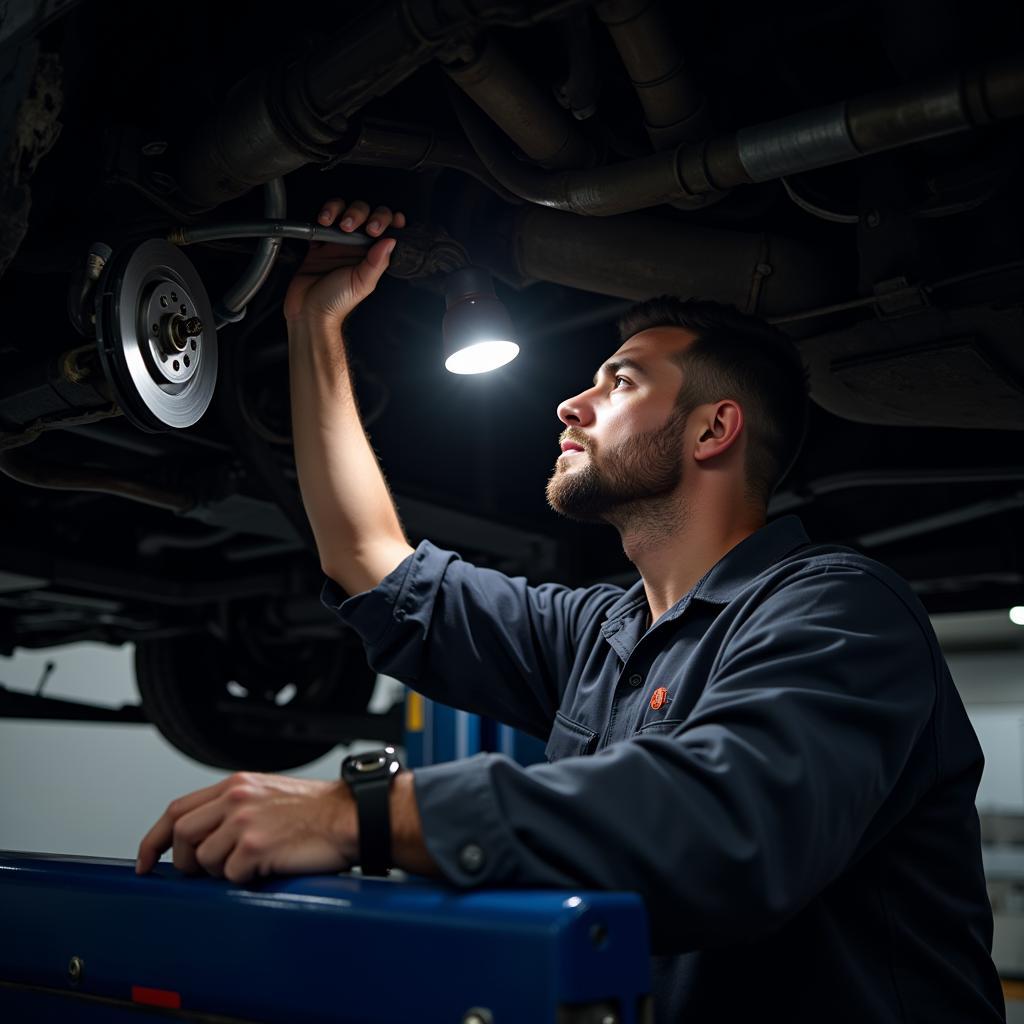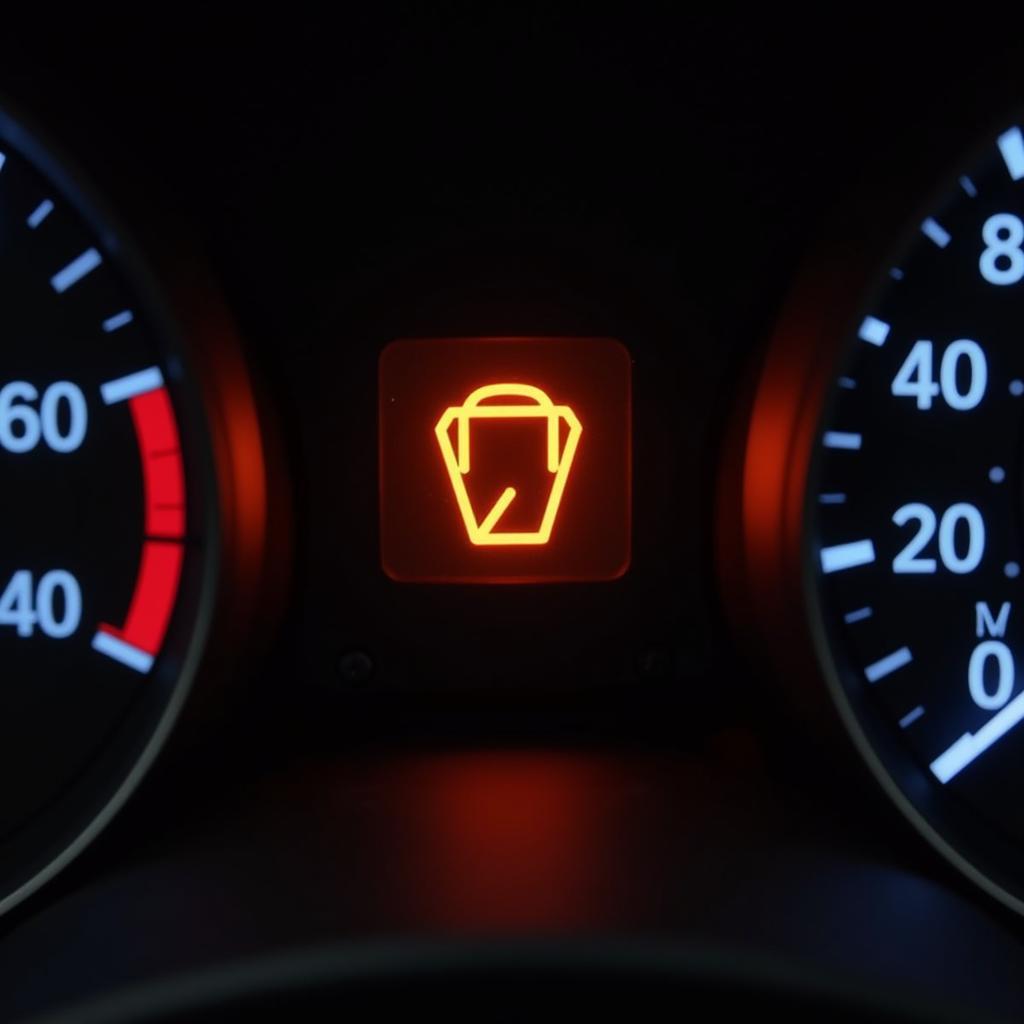A broken brake line can be a terrifying experience, especially when it triggers a false brake booster warning. This malfunction can lead to confusion and panic, making it crucial to understand the connection between these two seemingly unrelated components and how to address the situation safely.
Understanding the Culprit: Your Car’s Hydraulic Braking System
Your car’s braking system relies on hydraulic pressure to function correctly. When you press the brake pedal, you’re essentially pushing brake fluid through a series of lines and hoses, activating the calipers to clamp down on the rotors and stop the vehicle. A leak in this system, often caused by a broken brake line, disrupts this process, leading to reduced braking efficiency and potentially complete brake failure.
Why a Broken Brake Line Can Trigger a False Brake Booster Warning
The brake booster utilizes vacuum pressure to amplify the force you apply to the brake pedal, making it easier to stop your car. When a brake line breaks, the sudden loss of hydraulic pressure can confuse the brake booster system. This often results in a false warning light on your dashboard, even though the booster itself may be functioning correctly.
“It’s like your car’s computer is getting mixed signals,” explains John Thompson, a seasoned automotive engineer with over 20 years of experience in vehicle diagnostics. “The loss of brake fluid pressure is interpreted as a potential issue with the booster, triggering the warning light.”
Identifying a Broken Brake Line
A broken brake line presents various symptoms beyond a misleading brake booster warning. Recognizing these signs is crucial for a timely diagnosis:
- Soft or Spongy Brake Pedal: This occurs due to air entering the braking system from the broken line, compromising the hydraulic pressure needed for firm braking.
- Brake Pedal Traveling Further to the Floor: As brake fluid leaks, you might find yourself pressing the brake pedal closer to the floor to achieve the desired stopping power.
- Visible Brake Fluid Leak: Inspect the ground beneath your car, particularly near the wheels, for signs of a clear, yellowish fluid. This fluid can range in color from light yellow to dark brown, depending on its age and condition.
- Unusual Noises When Braking: A hissing or squealing sound when applying brakes could indicate a brake line leak.
What to Do if You Suspect a Broken Brake Line
A broken brake line demands immediate attention. Do not attempt to drive your vehicle. Instead, follow these steps:
- Pull Over Safely: As soon as you notice any of the aforementioned symptoms, safely maneuver your car off the road and bring it to a complete stop.
- Turn Off the Engine: Switch off the engine to minimize any further strain on the braking system.
- Call for Roadside Assistance: Contact a trusted mechanic or roadside assistance service to tow your vehicle to a repair shop.
 Mechanic Inspecting Brake Lines Under Car
Mechanic Inspecting Brake Lines Under Car
The Importance of Professional Repair
Repairing a broken brake line involves more than just replacing the damaged section. It necessitates bleeding the braking system to remove any trapped air and restore optimal hydraulic pressure. This process requires specialized tools and expertise, making it unsafe for DIY repairs.
“Attempting to fix a broken brake line yourself is incredibly risky,” warns Thompson. “Improper repairs can lead to air remaining in the system, significantly compromising braking performance and putting your safety at stake.”
Prevention is Key
While brake line failures can occur unexpectedly, you can minimize the risk through regular vehicle maintenance:
- Routine Brake Inspections: Adhere to your car’s recommended maintenance schedule and have your brakes inspected by a qualified mechanic at least once a year or as advised in your owner’s manual.
- Brake Fluid Flush: Brake fluid absorbs moisture over time, reducing its effectiveness and potentially corroding brake lines. Follow the manufacturer’s guidelines for regular brake fluid flushes.
- Vigilance: Be attentive to any changes in your brake pedal feel or unusual noises when braking. Address these issues promptly to prevent further damage.
Conclusion
A broken brake line, often masked by a false brake booster warning, presents a serious safety hazard. Understanding the symptoms, acting swiftly, and seeking professional repair are crucial for ensuring your safety and the well-being of others on the road. Remember, preventive maintenance is always better than an emergency repair.

